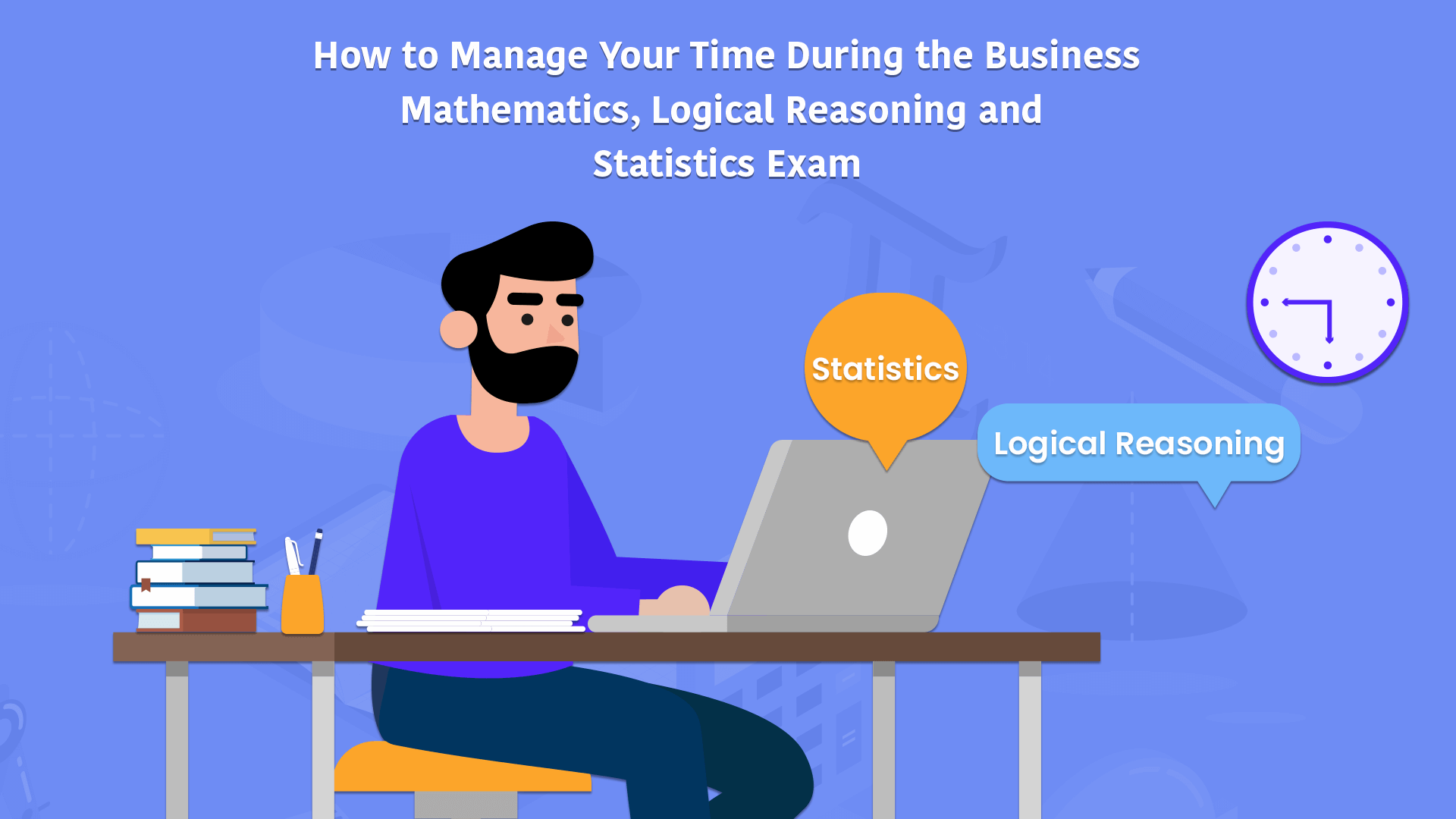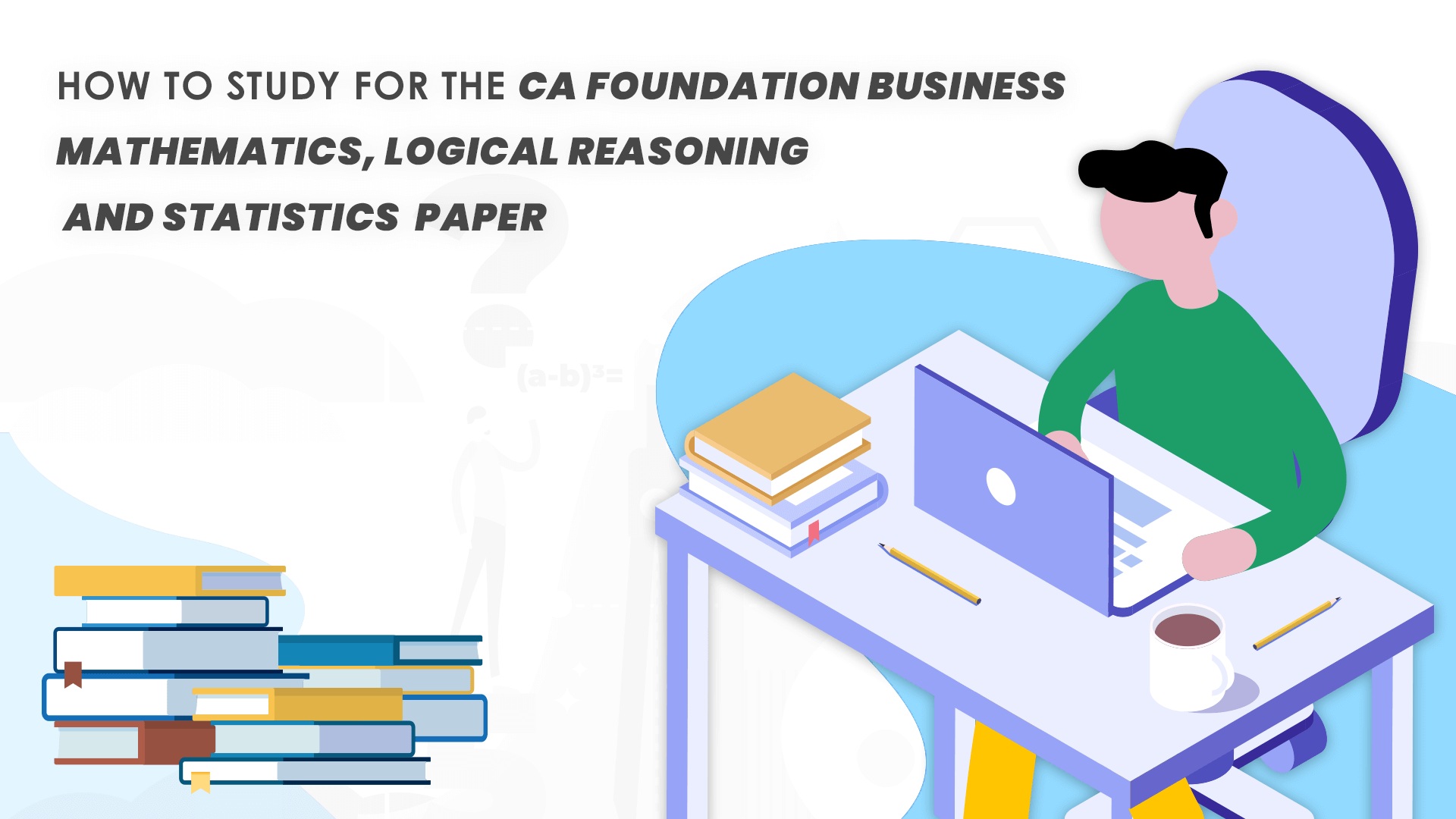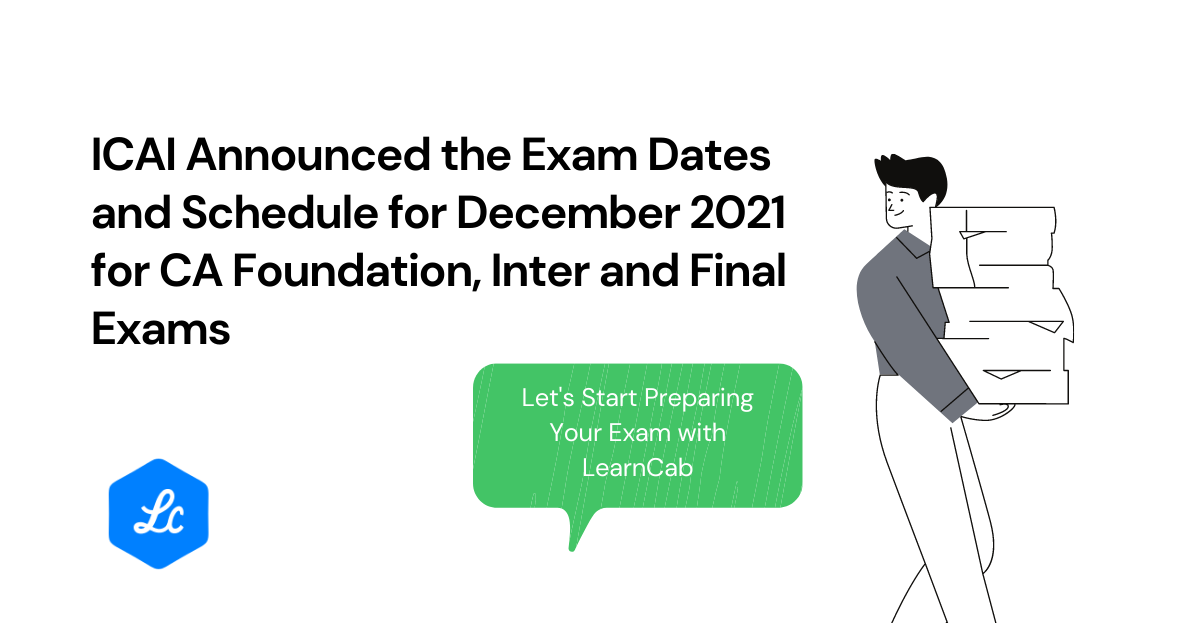The Journey to become a CA
What’s on this page: Introduction Why become a Chartered Accountant? The Institute of Chartered Accountants of India (ICAI) Bird’s Eye View of the Chartered Accountancy Course About the Examinations The CA Foundation Exam The CA Intermediate Exam The CA Final Exam All About Articleship Career Prospects Other Examinations and Certifications to Consider Frequently Asked Questions About the Chartered Accountancy CourseIntroduction
The Chartered Accountancy Profession is a noble one. It’s a challenging career. It stands at the cutting edge of trade, industry and economic growth. Chartered Accountants (CA) today occupy many important positions in top management. Both in the public and private sectors. As an aspiring chartered accountant, you’ll need to know right away that the journey to become a CA is not easy. Because of its importance. The journey involves a lot of sacrifice, soul searching and heartache. And so, a serious question comes to mind. Why do you want to become a chartered accountant?Why become a Chartered Accountant?
Why indeed. This is quite a personal question. And we can’t answer for you. But if it is because you want to do it because everyone around you is doing it … well that’s not a good enough reason. As we said earlier, the journey is long, and you’ll have to make many sacrifices along the way. You’ll have to give up on your social life for at least 3-4 years. You’ll have to put a 100% effort in your study. You should also be aware that although the entry for the course is easy, the exit is challenging. In other words, you’ll have to be serious and passionate about your study. For a long time. Otherwise, you’ll end up stuck in a rut with no end in sight. Of course, there are concrete benefits of becoming a CA. Rather than just pursuing your interest. It’s, after all, one of the most respected positions in the commerce domain. Not only that, it pays quite well too. In fact, the average starting salary for a new CA is around 7 l.p.a! If you’ve decided that becoming a CA is the right choice for you, you should know something about The Institute of Chartered Accountants of India (ICAI). It’s the institute that conducts the exams.The Institute of Chartered Accountants of India (ICAI)
To become a CA in India, you’ll have to gain membership to the ICAI. So, you’ll need to know something about this institute. How it functions, its responsibilities, etc.
Fig (1): What is ICAI?
According to the ICAI website, it is “a statutory body established by an Act of Parliament, viz. The Chartered Accountants Act, 1949 (Act No.XXXVIII of 1949) for regulating the profession of Chartered Accountancy in the country.” The body is responsible for education and administration of the Chartered Accountancy Course, the professional education of its members among other things. A bit of trivia about the institute is that it is the second largest such body in the world! As you can see, the prestige of this institute is immense. It’s also recognized worldwide as the premier body for maintaining the highest technical and ethical standards in accounting. This institute is going be a big part of your life for the foreseeable future. And so, we suggest that you find out as much as you can about the ICAI!Bird’s Eye View of the Chartered Accountancy Course
The Chartered Accountancy Course has two components: practical training and a theoretical (or examination) component. The theoretical component consists of passing three exams:- CA Foundation
- CA Intermediate
- CA Final
About the Examinations
As we said, there are three levels of examination. CA Foundation. CA Intermediate and CA Final. If you think of all the exams as a house, the CA Foundation would be like … the foundation. It’s the base upon which you build your knowledge. The CA Intermediate exam would be like the walls. You’ll be building up your base. The CA Final would be the roof, we suppose. It’s the most intensive part of the course. And it needs you to put a lot of effort in clearing it. Now, let’s figure out what each exam contains. And the registration process.The CA Foundation Exam
The first examination you’ll have to pass is the CA Foundation Exam. As you may recall, we said that the ICAI conducts all these examinations twice yearly. Once in May and the other in November. If you want to appear for the exam in May, you’ll have to register by 31st December of the previous year. And if you want to appear for the exam in November, the last date is 30th June of the current year. Got that? But you’ll need to meet some minimum criteria to register. Let’s see what those are.The CA Foundation Exam: Eligibility Requirements and Registration
You’ll have to appear for The Secondary School Examination (10+2) or its recognised equivalent by the Central Government. The ICAI prospectus gives you a list of acceptable alternatives. You can take a look at it here. Specifically, page 33. If you’ve met this prerequisite, go ahead and register! You’ll have to register with the Board of Studies (BoS), the part of the ICAI that deals with theoretical education, practical and computer training. Once you’ve registered, you’ll have at least four months of study time. (Notice that the last day for registering for the May/Nov exam is Dec/June.) And hopefully you’d have passed your class XII examination by then. After you’ve passed your class XII exam, and paid the necessary exam fees, then you can appear for the Foundation Exam. It’s kind of confusing, so let’s explain in detail. In a nutshell, you can register for the Foundation Exam if you have appeared for your class XII exams. But you can only appear for the Foundation Exam if you have paid the examination fees and have passed your XII exams. That way, your time isn’t wasted waiting for your XII results. Whew! Complicated. Here are more details on how to register and appear for the CA Foundation Exam.The CA Foundation Exam: Types of Papers
Alright. Now, let’s move on to what’s in the exam itself. There are four papers in this examination: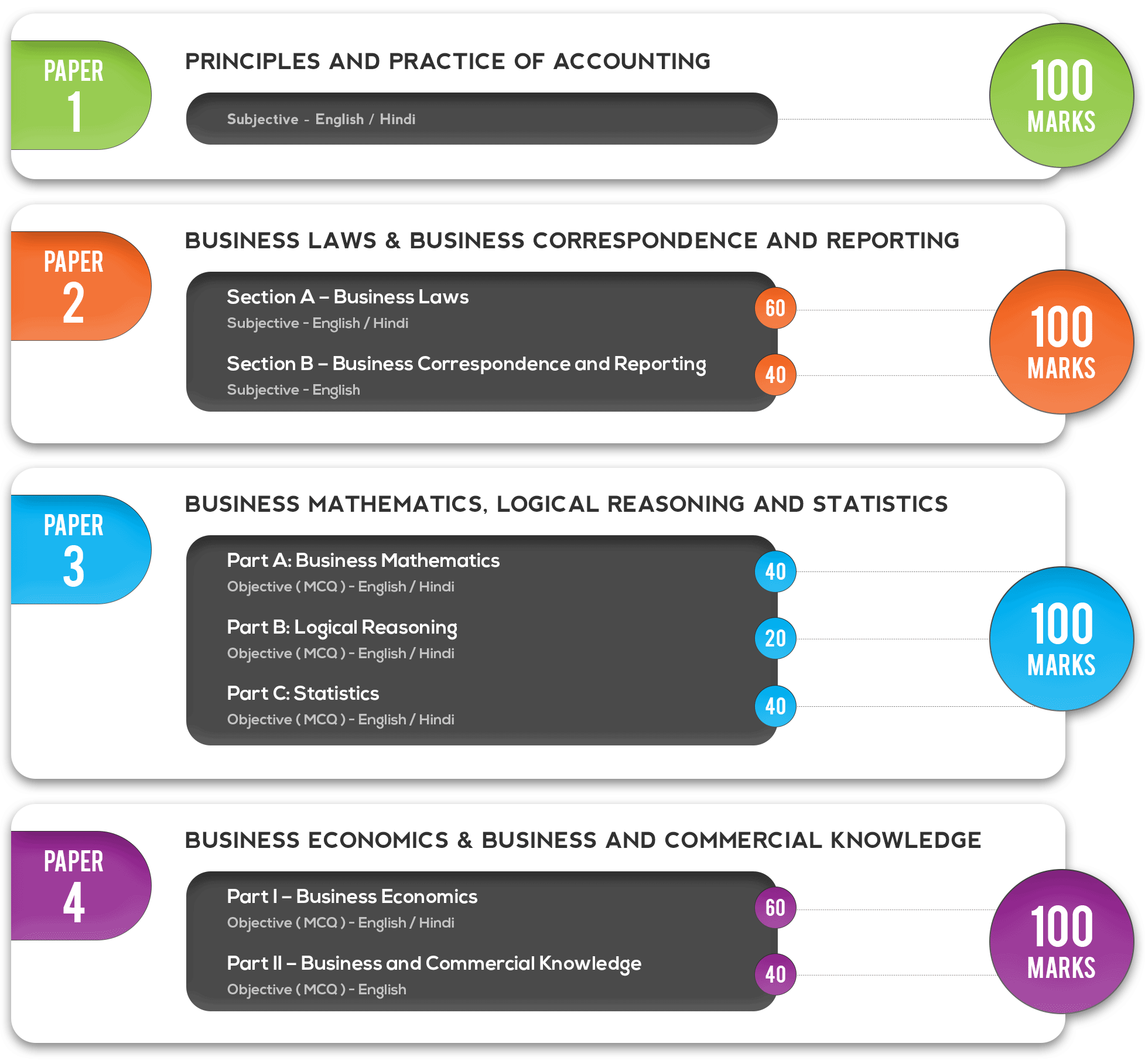
Fig(2) Papers of CA Foundation Exam
The first two papers, papers 1 and 2 contain subjective type questions. The next two papers, paper 3 and paper 4, are objective in nature with negative marking! For information on each paper and the syllabus, you should find out what is in the CA Foundation exam!Looking for study resources for the CA Foundation exam?
The CA Foundation Exam: Requirements for Passing
You can appear for the CA Foundation Exam as many times as you want. But you’ll have to appear for all papers at the same time. The minimum passing requirement is that you have to obtain at least 40% marks in each paper AND a minimum of 50% marks in the total aggregate of each individual attempt. That is, your marks are not carried forward from previous attempts. Here is the journey to clear CA Foundation:Video: Journey of CA Foundation Student
The CA Foundation Exam: General Tips
The CA Foundation exam is, in general, easy. Easy in the sense that the difficulty level is not any higher than your Class XII. As a result, many people take it too easily. And they end up failing. This is not going to be you. Understand that people come into this exam from various backgrounds. If you are a commerce student, chances are that you’ll find paper 1 and to a certain extent paper 4 to be easy. If you come from engineering, or have focused on mathematics, paper 3 is going to be easy. In any case, it’s a good idea to focus your study on those papers where you don’t have a strong base. But remember! Don’t neglect any paper. Score as much as possible in your strong areas (depending on background) and obtain at least the minimum marks in your weak areas. Also, keep in mind the examination is spread over roughly a week. In May 2018, ICAI held the exams on May 10, 12, 14 and 16. So it’s a long exam and you need to be well rested. Make sure that you eat well. Don’t get discouraged by not doing well on one of the papers. Make up for it in another. But ensure you get the minimum aggregate. [By the way, we suggest that, as you are pursuing the Chartered Accountancy Course, you pursue your graduation as well. This is for a fall-back option. Just in case.]The CA Foundation Exam: Statistics and Final Thoughts
To give you an idea of the pass rate, ICAI has released the passing statistics of the latest CA Foundation exam held in November 2018. As you can see, the pass rate is about 40%. Quite low for a relatively easy exam! And this is because of the reasons we mentioned earlier. People coming into the exam from different backgrounds. Or plain overconfidence.If you want to get the best chance of being a part of the lucky 40% who pass, sign up for our CA Foundation video lectures now.
 As our parting thought on the CA Foundation exam, we feel that the exam is relatively easy. Compared to what lies ahead. Also, most people fail because of lack of preparation. And not because of any intrinsic difficulty in the exam itself!
Okay. Now, let’s move on to the Intermediate Exam.
As our parting thought on the CA Foundation exam, we feel that the exam is relatively easy. Compared to what lies ahead. Also, most people fail because of lack of preparation. And not because of any intrinsic difficulty in the exam itself!
Okay. Now, let’s move on to the Intermediate Exam.
The CA Intermediate Exam
The CA intermediate exam is the next exam in the theoretical component of the course. The overall objective of this exam is to solidify and expand upon concepts learned during the foundation level. It’s more intensive than the foundation exam by a large degree. Just as in the case of the CA Foundation Exam, ICAI conducts the CA Intermediate exam twice early. In May and November of each year. But the eligibility and appearance requirements are … complicated. Let’s peek at what those are.The CA Intermediate Exam: Eligibility Requirements and Registration
The easiest way to enter this course and appear for the exam is to pass the CA Foundation Exam. Simple enough. But there’s more! You can also directly REGISTER for the exam if you satisfy one or more of the following:- Commerce graduate or post-graduate (minimum 55% marks)
- Other graduates/post-graduates (minimum 60% marks)
- CS Executive exam pass
- CMA Intermediate exam pass
- if you want to appear for the exam conducted in May, you must register on or before 1st September of the previous year (OR)
- if you want to appear for the exam conducted in November, you must register on or before 1st March of the current year.
- if you want to appear for the exam conducted in May, you must register on or before 1st August of the previous year (OR)
- if you want to appear for the exam conducted in November, you must register on or before 1st February of the current year.
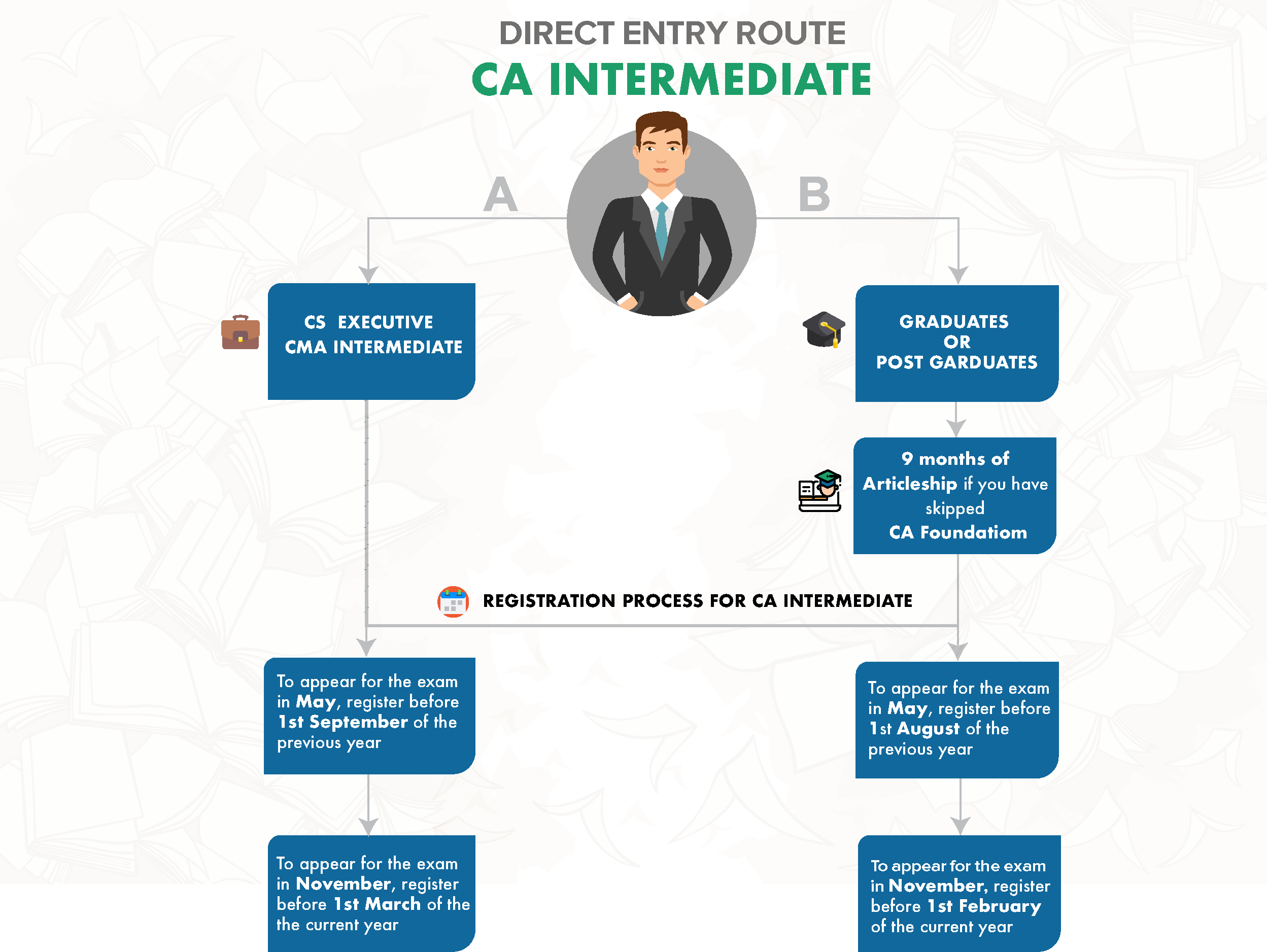
Fig (3): Direct Entry Route for CA Intermediate
Simpler now, correct? Bu there’s more! If you are a graduate/post-graduate, you’ll need to fulfil other obligations so that you can APPEAR for the exam. Remember, a little way back, we talked about articleship training? And how, depending on your background, you’ll have to register and get trained? Well, if you are such a graduate/post-graduate who has skipped CA Foundation, you’ll have to first train for 9 months before you can appear for the CA Intermediate exam. And before you start your articleship, you’ll have to go through a four weeks course known as ICITSS (Orientation Course and Information Technology). In this way, ICAI hopes that you’ll be able to develop a strong foundation to move ahead. Because you had skipped CA Foundation. (By the way, we feel that it’s a good idea that you do CA Foundation first even if you can skip it. We talk more about this in the section under study tips for CA Intermediate.) And for those who are CA Foundation pass and/or CS Executive/CMA Intermediate passes, the requirement is to undergo a study period of 8 months before exam appearance. And of course, you can only appear for the exam AFTER paying the necessary exam fees. Note that if you meet the minimum requirements for exam appearance, appear for the papers in the group(s) you’ve registered for. A picture is worth a 1000 words, so here is all of the above converted into a nice flowchart:
Fig (4): Eligibility and Registration Requirements for CA Intermediate
Okay. Let’s get back on track. We’ve talked about the minimum requirements to register for the exam. We talked about the deadlines for registration. We also talked about the fact the eligibility criteria for APPEARING for the exam is slightly different depending on how you choose to enter the Chartered Accountancy Course. And the reasoning behind ICAI’s decisions for eligibility and registration deadlines. Now let’s suppose that you’ve met these requirements. The registration process is roughly the same as for CA Foundation. Take a look at the process of registration and appearance for the CA Intermediate exam here.The CA Intermediate Exam: Types of Papers
The CA Intermediate Exam consists of two groups of papers. Group I and Group II. Papers of Group I:
Fig(5) Group I Papers of CA Intermediate
Papers of Group II:
Fig(6) Group II Papers of CA Intermediate
If you want more details on each paper and the syllabus, take a look here.The CA Intermediate Exam: Requirements for Passing
You can appear for either one or both groups of papers. Appearing for a group means that you’ll have to appear for all papers in that group. Note that you’ll have to pass both groups of papers to move on to the next step. If you appear for only one group, the minimum requirement to pass the group is that:- you obtain a minimum of 40% marks in each paper of the group and
- you obtain a minimum of 50% marks in the aggregate of all papers of the group taken together.
- you meet the minimum requirements to clear a group individually or
- you obtain a minimum of 40% marks in each paper of both the groups, and a minimum of 50% marks in the aggregate of all papers of both groups taken together.
The CA Intermediate Exam: General Tips
Now, things get interesting. The CA Intermediate Exam is an order of magnitude harder than the CA Foundation. But, there’s no need to worry, you see. With adequate preparation, and concentration on your fundamentals, there’s no reason why you shouldn’t pass. But before we get into the general tips, we do want to say something here. Even if you do meet the eligibility requirements that we talked about in the section above, we suggest that you pass the CA Foundation Exam first. We are not talking about those who have passed the CS Executive Exam or CMA Intermediate Exams. Because in studying and passing these exams, you’ll already have a good foundation (Haha! Did you see what we did there?) for the CA Intermediate Exam. No. We are talking about graduates and post-graduates specifically. Because your foundation may not be so strong. Perhaps your math skills are weak. Perhaps you are not a commerce student and your knowledge of accounting is not up to par. You’ll find great difficulty in going ahead then, you see. That’s why do CA Foundation even if you meet the bare minimum requirements! And, as always, when studying, focus your attention on papers in which you are relatively weak. And score as much as possible in your strong areas. Beware of the minimum requirements. Also, there is no need to fear exams. In this post, we’ve talked about how to overcome fear. And here’s where we give you tips related to this particular exam. And as we mentioned in the section related to CA Foundation, keep in mind the exam is held over several days. And as always, in long lengthy exams, you need to be well rested. Eat well. Sleep well. And don’t be discouraged of not doing well in a paper. Make up for it in another. Even if you know you are going to fail a group, try to get at least 60% in the remaining paper(s) of that group. This way, you can at least achieve exemption status for that/those paper(s) for your next attempt! (See the section above for details.)The CA Intermediate Exam: Statistics and Final Thoughts
As always, numbers tell most of the story. Here are detailed stats released by ICAI about student numbers and pass rate. Compare these to the CA Foundation. You get the idea. This exam is a lot more strenuous! The pass rate for each individual group is around 20% or so as you can see. So, it is quite a bit harder than CA Foundation.The CA Final Exam



